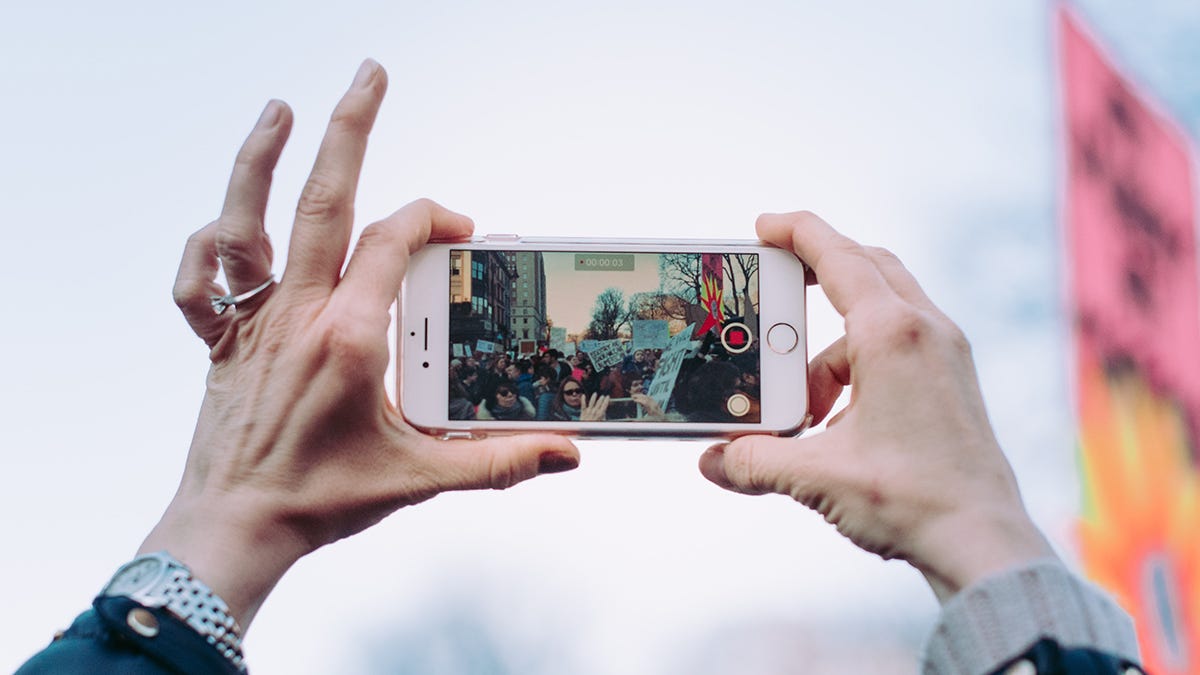https://gizmodo.com/how-to-use-your-phones-camera-to-make-gifs-of-anything-1839977751

GIFs are fun and can be deployed everywhere from your Twitter feed to your workplace Slack conversations—here’s how you can create them straight from your phone’s camera, with or without extra app help, turning any moment from your life into an instantly shareable, bite-sized digital animation.
If an iPhone is your cell phone of choice, remember you’ve got Live Photos built right in—even if you’ve never gotten around to making much use of them (and presuming you bought an iPhone launched in 2015 or later). The feature is enabled or disabled via the Live Photos button (the concentric circles icon) on the Camera shutter screen.
Assuming you’ve captured a bunch of photos as Live Photos, with three seconds’ worth of frames in total, they can be converted into GIFs from the Photos app on your phone. With the photo on screen, swipe up to choose either Loop (the animation repeats) or Bounce (the animation goes forwards then backwards) as your animation choice.
Tap Share (the arrow jumping out of the box) and the GIF format is used by default—you don’t need the help of any extra apps. From the Media Types heading under Albums in Photos, you can see all the Live Photos you’ve turned into GIFs, and share them again.
For a little more control over the process, Lively for iOS is one of the best tools in the business: You can trim the GIF, change its speed, and adjust the frame size, but you do need to pay $3 to export the finished animations without a watermark.
Over on Google Pixel phones (2017 and later), Live Photos is called Motion Photos, but the principle and the clip length (three seconds) is the same. On the latest version of the Google Camera app, you tap the arrow at the side of the shutter screen to choose whether Motion Photos are enabled, disabled, or applied automatically (so when you keep the camera steady enough for long enough).
Once a Motion Photo has been captured and is up on screen in the Google Photos app, exporting it couldn’t be much easier: Tap the Menu button (three dots) then choose Export and GIF (if you can’t see the Export option, it’s not a Motion Photo). The GIF gets saved as a new image in the Google Photos app, ready for sharing.
Animated snaps are called Motion Photos on flagship Samsung Galaxy handsets (2016 and later) too. To make sure you’re recording Motion Photos, tap the cog icon on the camera shutter screen, and you’ll find the Motion photo toggle switch.
Unfortunately there’s no easy way to convert these Motion Photos to GIFs inside the on-board software, though the option was available on older software. You can export them as videos—tap a Motion Photo when it’s playing, then the Menu button (three dots), then Save video.
What you can do is build GIFs from video captured on your Samsung Galaxy phone, and that includes Motion Photos that you’ve exported as videos as we’ve just explained. Start playing a video in the Samsung Gallery app, then pause it, then tap the GIF button (top right)—you get options for trimming or changing the speed of the clip before you share it.
Plenty of third-party apps will take on GIF creation duties for you, and give you a bit more control over the finished product than the built-in options do too. Giphy for iOS and Android, for example: Tap the Plus icon at the bottom, then tap and hold on the Shutter button to make your GIF. You can drop a bunch of fun stickers on top and Giphy can also convert videos captured on your phone.
Google actually has a separate app called Motion Stills for Android and iOS that can capture GIFs directly from the camera, as well as process your Motion Photos (or Live Photos on iPhones). If you need extra features like text or stickers on top of your GIFs, it’s worth installing.
Elsewhere GIF Maker for iOS is one of the best options for Apple phones, though you’ll find some of the features limited until you pay $5 for the premium version—it can capture GIFs straight from the camera or convert existing photos and videos, throw on a bunch of effects and overlays, and more besides.
GIF Maker for Android (no relation) is almost as comprehensive, packing in a host of filters and features for getting great GIFs on your phone (though again, a lot of the functionality needs paying for). With rotate, resize, trim and other options included, it’s like having a mobile video editor for capturing GIFs on the go.
via Gizmodo https://gizmodo.com
November 22, 2019 at 08:42AM
